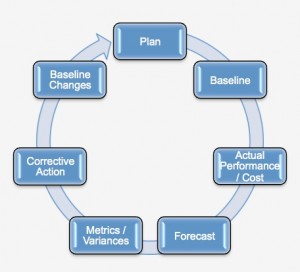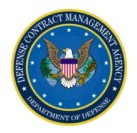 Reducing Program Risk with Earned Value Management explores the business value of Earned Value Management (EVM) processes and tools and how they can streamline program execution and drive down risk. The eBook shares a brief overview of EVM in business terms and shares how EVM helps companies gain control of programs, monitor and correct program health, boost visibility and management oversight, and demonstrate program control to customers. The eBook also shares how companies can leverage PLM to file the gap most companies have in creating an Earned Value Management (EVMS) system.
Reducing Program Risk with Earned Value Management explores the business value of Earned Value Management (EVM) processes and tools and how they can streamline program execution and drive down risk. The eBook shares a brief overview of EVM in business terms and shares how EVM helps companies gain control of programs, monitor and correct program health, boost visibility and management oversight, and demonstrate program control to customers. The eBook also shares how companies can leverage PLM to file the gap most companies have in creating an Earned Value Management (EVMS) system.
Please enjoy the summary below, or click the report to download a PDF overview (free of charge, no registration required).
For the full report, please visit our sponsor Dassault Systèmes (free of charge, registration required).
Why Earned Value Management?
 Large programs are notoriously difficult to deliver on time and on budget. But expectations are high on program managers and program management offices (PMOs) even in the face of increased complexity from multi-discipline initiatives, intense budget scrutiny, and globally dispersed supply chains. Earned Value Management (EVM) helps reduce risk on high cost, high risk, time-sensitive programs. It improves a program’s odds for success and provides accountability and traceability into cost and schedule variances. It adds a new level of control, oversight, discipline, and rigor to program management to prevent cost overruns, missed scheduled milestones, and late delivery dates.
Large programs are notoriously difficult to deliver on time and on budget. But expectations are high on program managers and program management offices (PMOs) even in the face of increased complexity from multi-discipline initiatives, intense budget scrutiny, and globally dispersed supply chains. Earned Value Management (EVM) helps reduce risk on high cost, high risk, time-sensitive programs. It improves a program’s odds for success and provides accountability and traceability into cost and schedule variances. It adds a new level of control, oversight, discipline, and rigor to program management to prevent cost overruns, missed scheduled milestones, and late delivery dates.
EVM improves program management by eliminating subjectivity. The approach lets program managers factually quantify program spending and progress. It provides a mechanism to identify and mitigate issues early before things get too far off track. It also offers a standard, proven way for customers and program sponsors to audit progress to gain confidence that the programs they’re funding are on track. Many companies choose to adopt EVM to improve program success. Others are required to use EVM for specific customers, contract types, and contract values or may need to demonstrate earned value to justify billing. Either way, EVM adds value and improves confidence in program delivery.
 Compliance with ANSI/EIA-748 is required for DoD cost or incentive type contracts valued at or greater than $20 million. For cost or incentive type contracts valued at or greater than $50 million, compliance with the management attributes of the ANSI/EIA-748 32 GLs is demonstrated through a formal EVMS validation process. – Defense Contract Management Agency Instruction 208
Compliance with ANSI/EIA-748 is required for DoD cost or incentive type contracts valued at or greater than $20 million. For cost or incentive type contracts valued at or greater than $50 million, compliance with the management attributes of the ANSI/EIA-748 32 GLs is demonstrated through a formal EVMS validation process. – Defense Contract Management Agency Instruction 208
Conclusion and Recommendations
EVM helps mitigate program schedule and budget risk. It helps companies manage large, complex, time-sensitive, risky programs. Further, it’s required to do business in some industries. EVM provides control, connects program data, helps monitor and correct program health, provides visibility to improve management insight, and demonstrates control to customers to increase their confidence.
EVM requires an organizational and systems investment. Today’s advanced PLM systems provide an opportunity to extend existing infrastructure to connect disparate program information from schedule and cost systems, calculate EVM, and provide management insights in context with products and programs.
Based on industry experience and research for this report, Tech-Clarity offers the following recommendations:
- Leverage PLM as the backbone for the EVMS, connecting EVM with programs and program deliverables.
- Look for solutions that already incorporate the right data model, processes, and algorithms. There is no need to create this from scratch.
- Look for a solution that offers flexibility to extend reporting and processes to accommodate additional customer or management needs.
